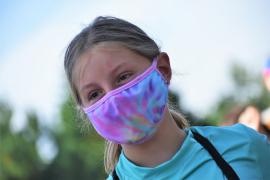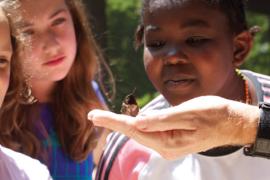Do you ever wonder what other camps offer for programs? Are your facilities similar to those at other camps like yours? Are there differences in sites, facilities, and programs based on characteristics such as type, sponsorship, or geographic location? Every three years ACA conducts a randomized survey about sites, facilities, and programs of our accredited camps. The following brief overview offers you a snapshot of some of the information found in this year's survey. Looking at the findings through various lenses of camp characteristics provides a picture of our camp community.
Findings through a General Lens
Several findings offer interesting insights into camp programs and sites in general.
- Campers are physically active well above the recommended 60 minutes/ day (Figure 1).
- One out of five camps work directly with schools during the school year (Figure 2).
- Almost all camps intentionally target a variety of outcomes, but over half do not measure their efforts (Figure 3).
- Over 60 percent of camps do not use a group purchasing program (no figure).
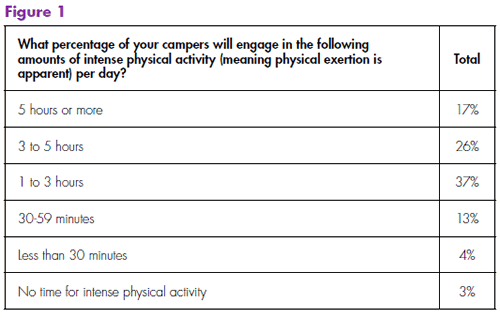
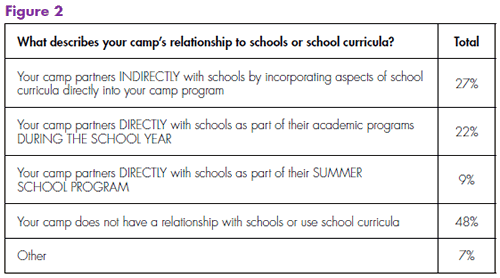
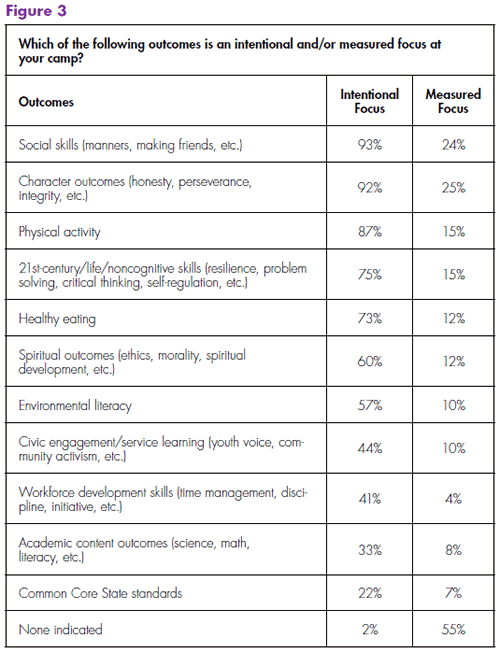
These findings illustrate the way this survey offers camps a general benchmark for comparisons. However, in some cases, a camp may want to add additional filters to hone in on more specific information that allows comparisons to other camps with similar profiles. The next section provides examples that illustrate how the findings differ when varied lenses are applied.
Findings through Multiple Lenses
Sometimes the findings look different when viewed through a day versus overnight lens. Two examples focused on healthy food options and the top sports and recreation activities at camp illustrate the differences found when using this lens:
- Healthy and nut-free snacks are the most widely addressed healthy food option with day camps, while overnight camps offer nonmeat options, healthy snacks, and salad bars (Figure 4).
- The top sports and recreation activities in overnight camps are swimming, archery, canoeing, hiking, and camping skills, while day camps' top activities are swimming, basketball, archery, hiking, and challenge courses (Figure 5).
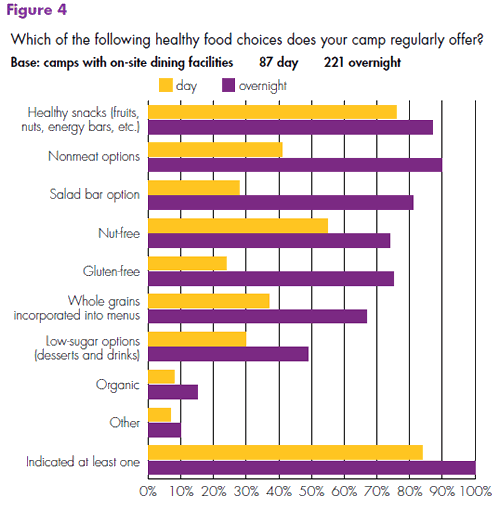
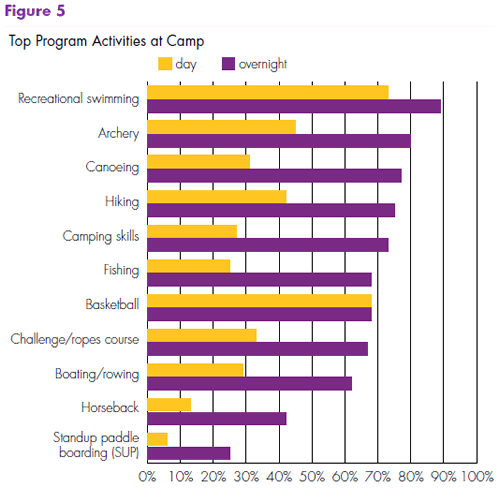
In some cases, looking at the day versus overnight findings with a second filter, such as sponsorship or geographic area, can offer interesting insights. Let's look at one staffing example focused on seasonal paid staff (Figure 6). The day versus overnight lens shows day camps average 73 seasonal paid staff and overnight camps employ an average of 78. However, when broken out by sponsorship, a different picture emerges. We see for-profit camps employed the most seasonal staff in both day camps (140 staff) and overnight camps (108 staff). Accuracy is the benefit to understanding these filtered results. For religiously affiliated camps, the general staffing averages are much higher than what is typically found in their camps. For them, knowing the average is 47 paid seasonal staff in their overnight camps offers a much more appropriate benchmark for comparisons.
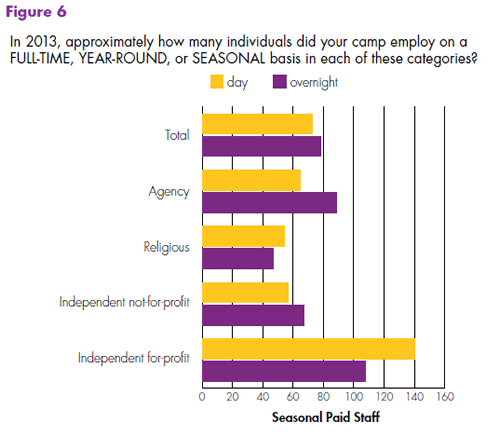
The same kind of information can be found when using a geographic filter. For example, let's focus on overnight camps. Owners of these camps are often landholders who not only use their land for camp programs, but are also viewed as important stewards of the environment. Figure 7 shows the average overnight camp proprietor owns 355 acres with 198 available for programming and 157 acres conserved (not for development or program use). As illustrated, camps in Mid-America and the West conserve more acreage, but given the more densely populated East Coast, the acres conserved by New England and Mid- Atlantic camps can be critically important to local conservation efforts.
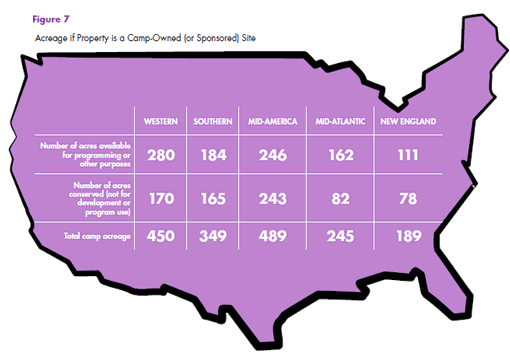
Summary
These ACA business reports offer camps a wealth of information for use with boards, budget s, long-range planning, and marketing. Learn more information about the ACA Sites, Facilities, and Programs Report: 2014, or learn more about all of the ACA business reports, visit : www.ACAcamps.org/research/research-reports-summaries-and-data.
Troy Bennett is an ACA research assistant working at the University of Utah. He is pursuing a doctoral degree in the Parks, Recreation, and Tourism Department.
M. Deborah Bialeschki, PhD, is director of research for the American Camp Association. She can be contacted at dbialeschki@ ACAcamps.org.
Originally published in the 2014 September/October Camping Magazine.

